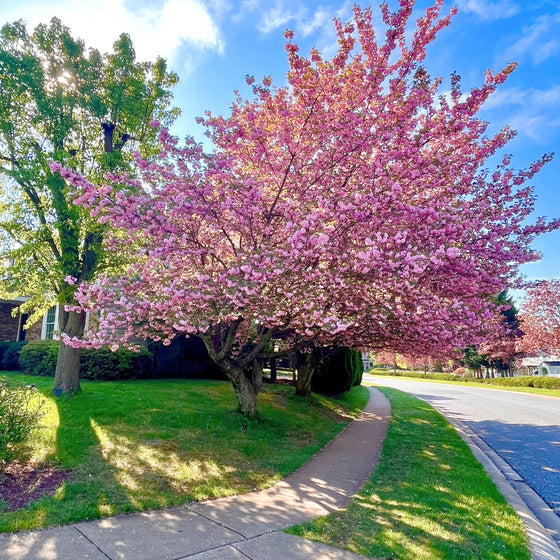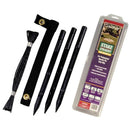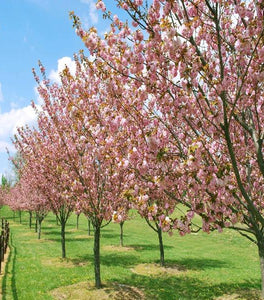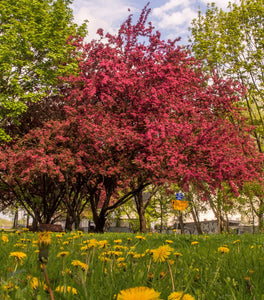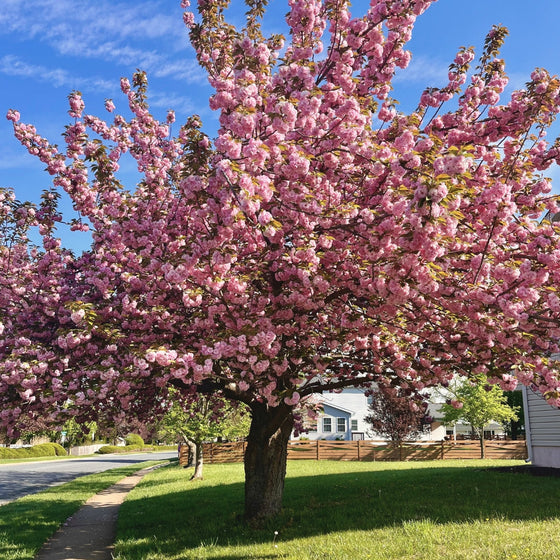
Images Depict Mature Plants
Kwanzan Cherry Trees for Sale Online
Kwanzan Cherry Trees are lovely specimens that put on an incredibly early spring show with large, deep pink, double blooms highlighted by the bronze-red new growth. The Kwanzan produces the fullest pink blooms compared to its Cherry Tree cultivar, and it is one of the easiest flowering trees to grow.
You may recognize these trees because they are one of the main trees showcased at Washington, DC's annual Cherry Blossom Festival. Boasting multi-seasonal interest, the trees are loved beyond just their famous pink flowers. Leaves emerge a deep red before transitioning to green in summer and fading to a beautiful yellow fall color.
Flowering Cherry Trees like the Kwanzan are extremely low maintenance and are known to tolerate a range of growing conditions. Ideal conditions for these stunning yard specimens include full sun and well-draining soil. The infamous trees can tolerate part shade conditions and handle acid and alkaline soils.
For optimal growth of your Cherry Tree, we recommend watering deeply but infrequently. Once your Kwanzan Tree has been established, you can apply a slow-release nitrogen-rich fertilizer.
Popular for use as a shade tree, yard focal points, and path borders, your opportunities to incorporate a Kwanzan Cherry Blossom Tree in your yard are endless. The Kwanzan's upright vase shape and hardiness to the elements make it perfect for lining a street or driveway.
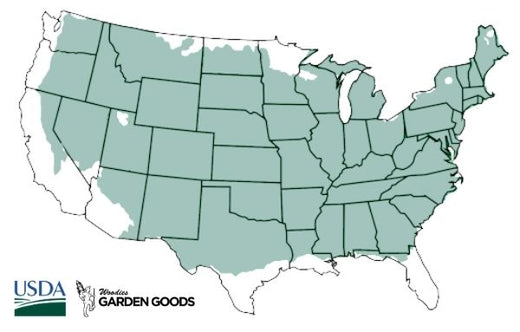
| Hardiness Zone: | 4-8 |
|---|---|
| Mature Height: | 20 to 25 feet |
| Mature Width: | 15 to 20 feet |
| Classification: | Broad leaved deciduous tree, spring flowering |
| Sunlight: | Full sun |
| Habit: | Upright, vase shaped canopy |
| Foliage: | Dark green, brilliant bronze-orange fall color |
| Flower Color: | Pink, very floriferous |
| Pruning Season: | No pruning needed |
| Soil Condition: | Any well drained soil |
| Water Requirements: | Water well until established |
| Uses: | Tolerates moist soil and full sun. Full sun brings out the best fall color. Will adapt to drier sites |


